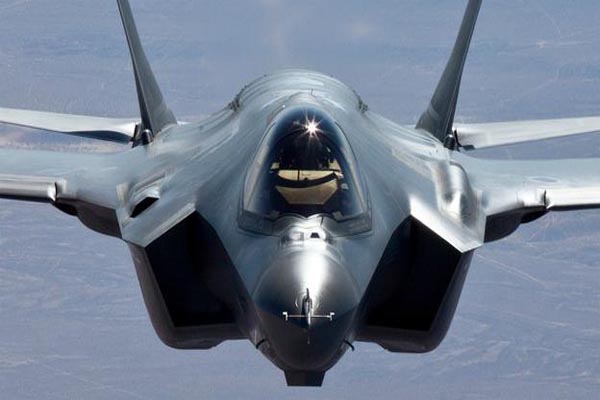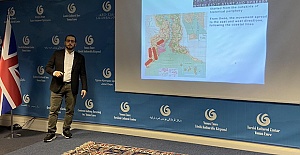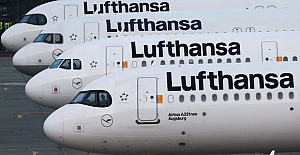The stealthy fifth-generation fighter, built by Lockheed Martin, is designed to penetrate foreign air defences and bolster US military superiority – and that of its allies - in the years to come. Along with its ability to evade radar, the supersonic Joint Strike Fighter boasts the world’s “most powerful” fighter turbofan, a helmet-mounted display that is designed to give the pilot a 360-degree virtual view combining sensor and flight data, and advanced electronic arrays that will allow it to pick out air and ground targets. But the crown jewel of the US military’s technology investment portfolio is now becoming a glaring eyesore for Pentagon planners who are forced to defend its ballooning costs and delays while the military is facing across the board cuts. To compound the problem has been a slew of technical problems from getting the vaunted helmet-mounted display to work to peeling in the aircraft’s stealth coating. Other classified problems have also been identified. But military officials working on the programme have a simple message: when it comes to so-called military megaprojects , these sorts of problems are bound to happen. “It’s never nearly as bad, nor nearly as it good as it first appears,” Vice Admiral David Dunaway, the commander of Naval Air Systems Command, in Patuxent River, Maryland, told an audience at a Navy trade show this week in the Washington DC area.
While touting progress, Dunaway was careful to temper expectations about the aircraft, calling the F-35 a “fairly mature air vehicle”. The biggest problem the programme now faces is attempts to change the requirements for the aircraft, something that typically happens with Pentagon weapons where development can stretch out over years and even decades.
Such changes, which inevitably add complexity, are often made without considering the potential costs. “Change will kill the programme,” Dunaway said emphatically.
‘Trillion dollar fighter’
The F-35 is being developed in three variants that will eventually be used by the US Air Force, Navy, Marine Corps, as well as eight other countries that have committed to buying the aircraft and are helping to pay for its development. The theory was that having a basic common frame across three services would help keep costs down.
The US Air Force will fly the F-35A, which takes off and lands like a conventional aircraft, while the Navy will get the F-35C, which can operate from aircraft carriers. The most complex of the three variants is the short takeoff and vertical landing (STOVL) aircraft that is supposed to be able to operate without the need for a traditional runway.
That version of the aircraft, known as the F-35B, has what’s called a “thrust vectoring nozzle,” which deflects engine exhaust to achieve the vertical lift that allows the aircraft to hover. The STOVL version—the first to go into service - will be used by the US Marine Corps and the Royal Navy.
Although the first planes have long since been delivered for testing, the aircraft of the future continues to hit turbulence. The engine of an F-35A developed a crack that temporarily grounded the entire fleet earlier this year; the tail hook for the F-35C, which allows it to land on an aircraft carrier, had to be redesigned by aircraft maker Lockheed Martin, and there have been concerns that intense heat from engine of the aircraft could endanger the crew and equipment onboard aircraft carrier (officials speaking at the show said they are looking at protective coatings).
F-35 Joint Strike Fighter battles for future
F-35 Lightning II, better known as the Joint Strike Fighter, is the world’s most expensive military weapons programme.
12 Nisan 2013 Cuma 10:33
reads.




 The candidates vying to be the next London mayor
The candidates vying to be the next London mayor Enfield Council commits to anti-racism and diversity pledge
Enfield Council commits to anti-racism and diversity pledge President Erdogan promised supporters his party would learn its lessons from the defeat
President Erdogan promised supporters his party would learn its lessons from the defeat Mayor of London and London Assembly elections
Mayor of London and London Assembly elections Off duty Police sergeant Eren Emin catch suspected thief while on stag do
Off duty Police sergeant Eren Emin catch suspected thief while on stag do A Century of Urban Transformation, Istanbul’s Evolution
A Century of Urban Transformation, Istanbul’s Evolution Future Painters Exhibition at Tottenham Hotspur Stadium
Future Painters Exhibition at Tottenham Hotspur Stadium Models of Teaching International Journalism for Sustainable Development
Models of Teaching International Journalism for Sustainable Development English Premier League leaders Arsenal will visit title contenders
English Premier League leaders Arsenal will visit title contenders Liverpool meet Atalanta and West Ham face Bayer Leverkusen
Liverpool meet Atalanta and West Ham face Bayer Leverkusen Arsenal face Bayern Munich and Manchester City play Real Madrid
Arsenal face Bayern Munich and Manchester City play Real Madrid UK Transfer deadline day, the transfer window closes tonight
UK Transfer deadline day, the transfer window closes tonight Petrol prices on UK forecourts hit 150p a litre
Petrol prices on UK forecourts hit 150p a litre Europe's travel strikes: Flight and train disruption you can expect in April
Europe's travel strikes: Flight and train disruption you can expect in April Enfield Council website achieves digital inclusion recognition
Enfield Council website achieves digital inclusion recognition Enfield Council’s Planning Enforcement team goes from strength to strength
Enfield Council’s Planning Enforcement team goes from strength to strength

















